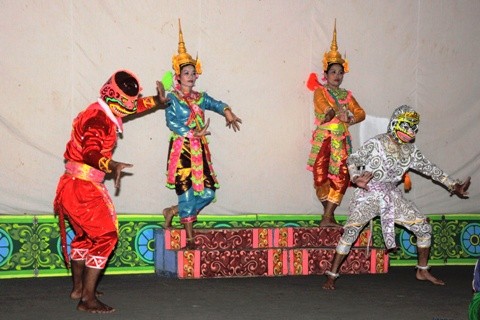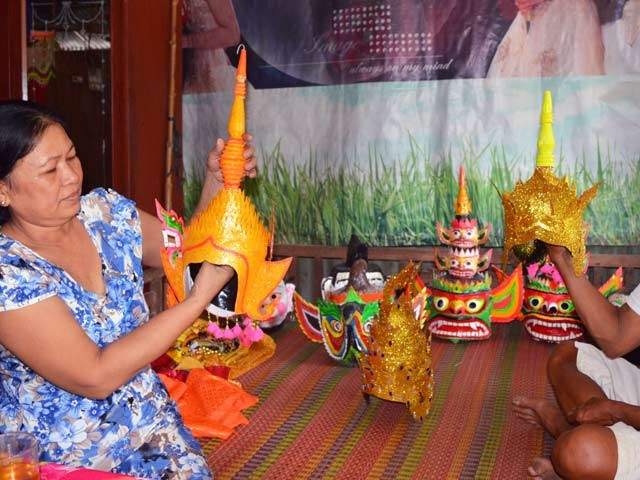(VOVworld) – “Ro bam” or “Rom Ro bam” is a classical dance-drama on the Khmer’s royal stage. Among the Khmer theatrical forms, Ro bam dance is considered the summit of artistic values. Hong Hanh Chi has a story “Ro bam, a typical dance-drama of the Khmer”.

A Robam performance |
The Ro bam theatrical genre tells old stories, legends, and mythology through dance movements. The most common topics are Buddhism, Brahmanism, and India’s Ramayana epic. The scripts and dance movements reflect Khmer educational and moral philosophy.
Professor, Doctor Le Ngoc Canh is Vice President of the Vietnam Dancers’ Association: “To talk about Khmer culture is to talk about Ro bam. It’s a treasure of the Khmer culture. Ro bam is a performance of dancing, singing, and costumes.”
As a royal stage genre, the costumes, behavior, and dialogue of the characters reflect the royal manner. The design of a Ro bam stage follows a number of conventions. A play often has two groups: bad and good characters. The representatives of the good side are the King, princes, and princesses, who don’t wear masks. The evil roles consist of different types of people who wear masks.

Ms. Lam Thi Huong is a Ro bam artist who also makes performance masks
|
The roles have to follow conventional dance movements of hands and feet. There are 33 dances with different meanings. The masks reflect the Indian culture which harmoniously combines artistic and graphic values. There are masks expressing evil minds, masks of the Monkey King Hanuman, the horse Manoni, and sacred animals like the bird, phoenix, tortoise, and snake.
Besides the good and evil roles, there is a clown to lighten the mood on the stage. The background music is provided by drums, gongs, and flutes. Drum sounds heighten the fight scenes while flutes bewail more mournful situations.
Ro bam has been introduced throughout the Mekong Delta, particularly in Tra Vinh and Soc Trang province, under the sponsorship of Khmer pagodas. Son Del, a member of the Ro bam Sasac Bung Chong art troupe in Soc Trang, says. “Ro bam was developed by our ancestors and we’ve tried to preserve it. We perform it to entertain Khmer people, not for money. We also perform it our Robe-offering ceremony.”
Ro bam dance-drama has been performed at Khmer festivals and in villages to entertain people after a harvest. It’s the pride of the Khmer and a typical genre among Vietnam’s 54 ethnic groups.